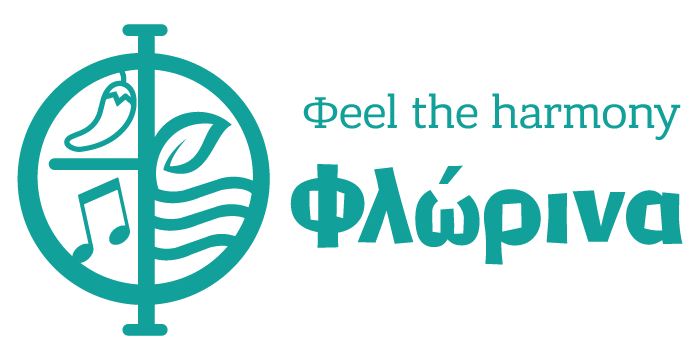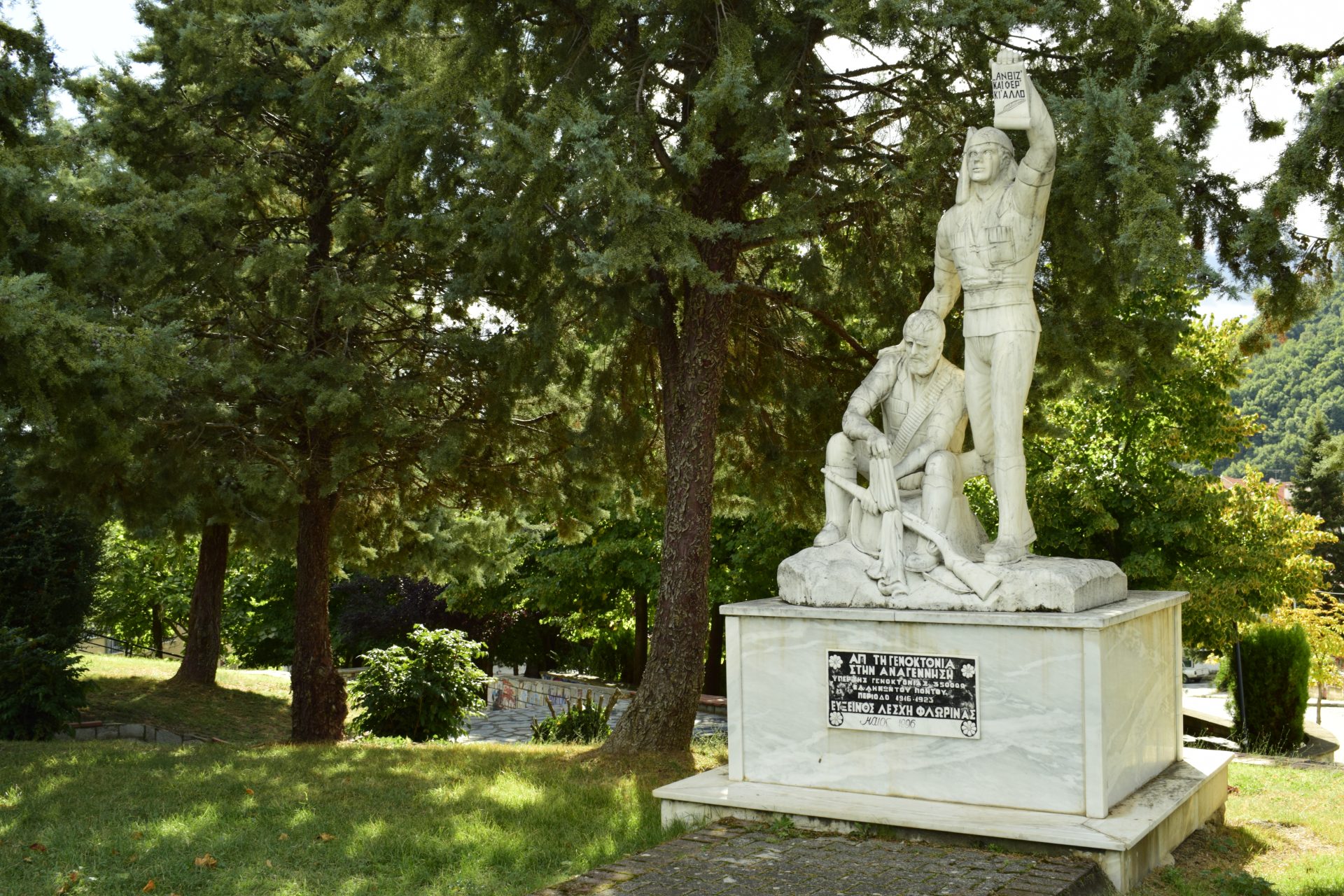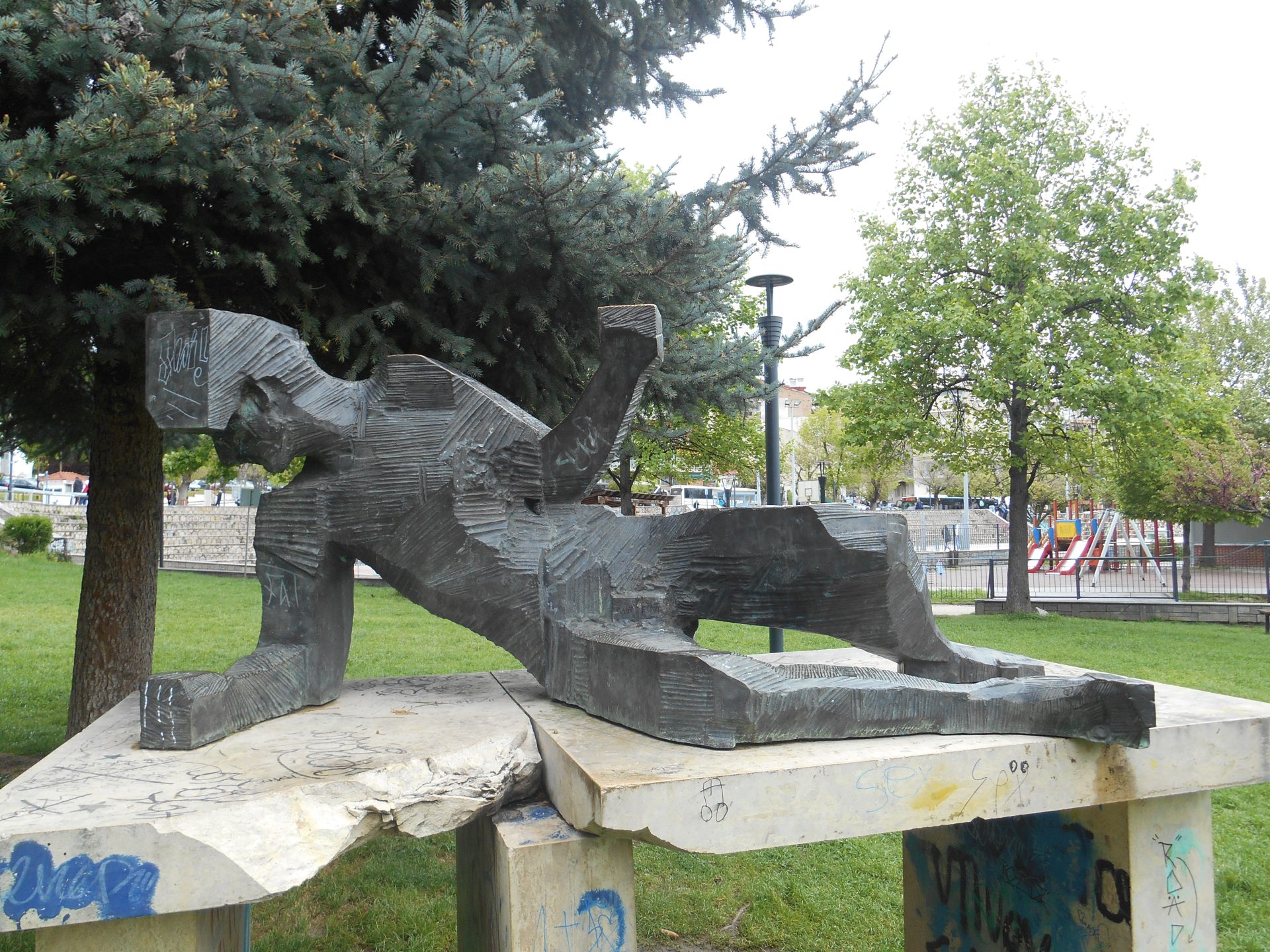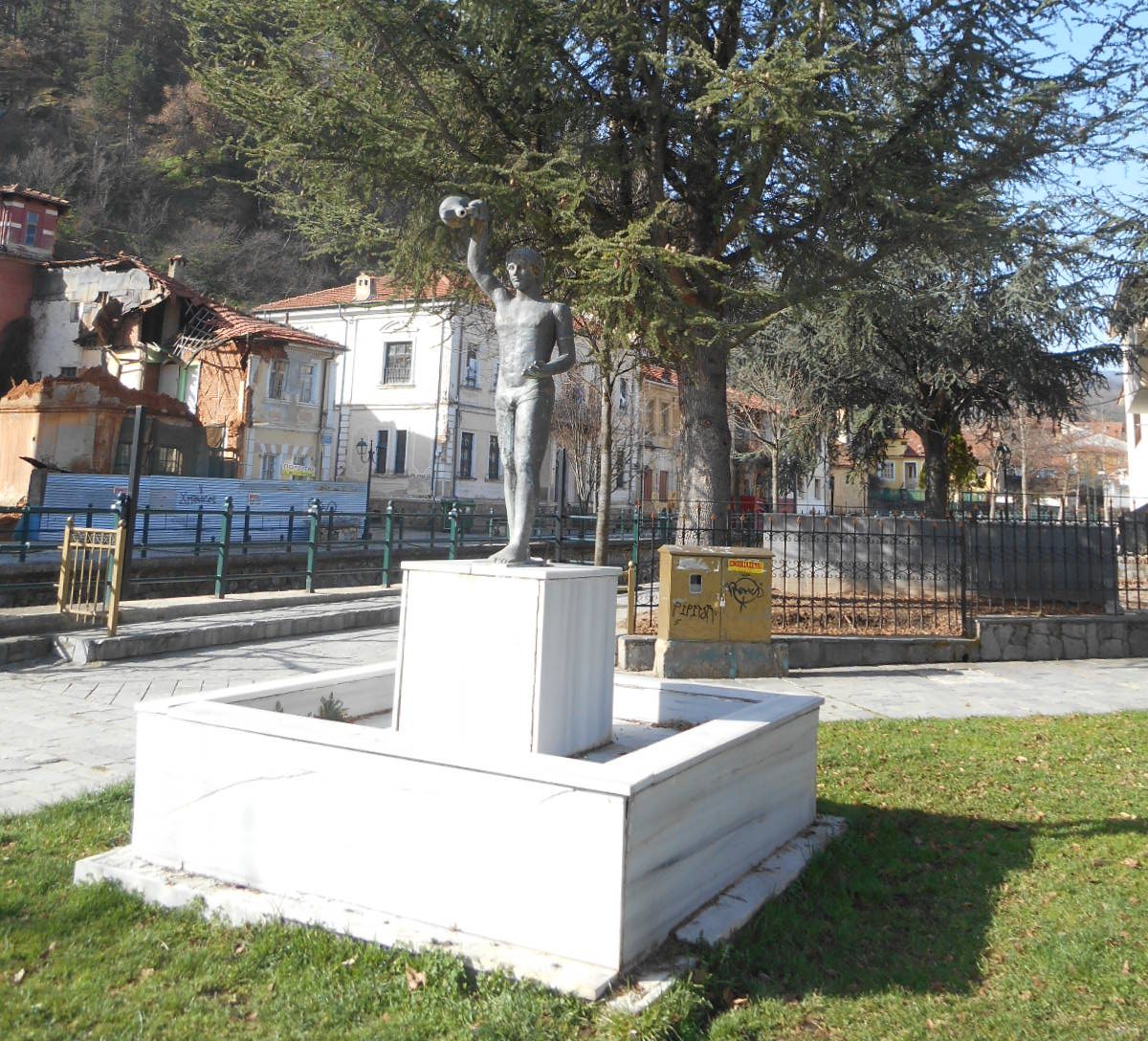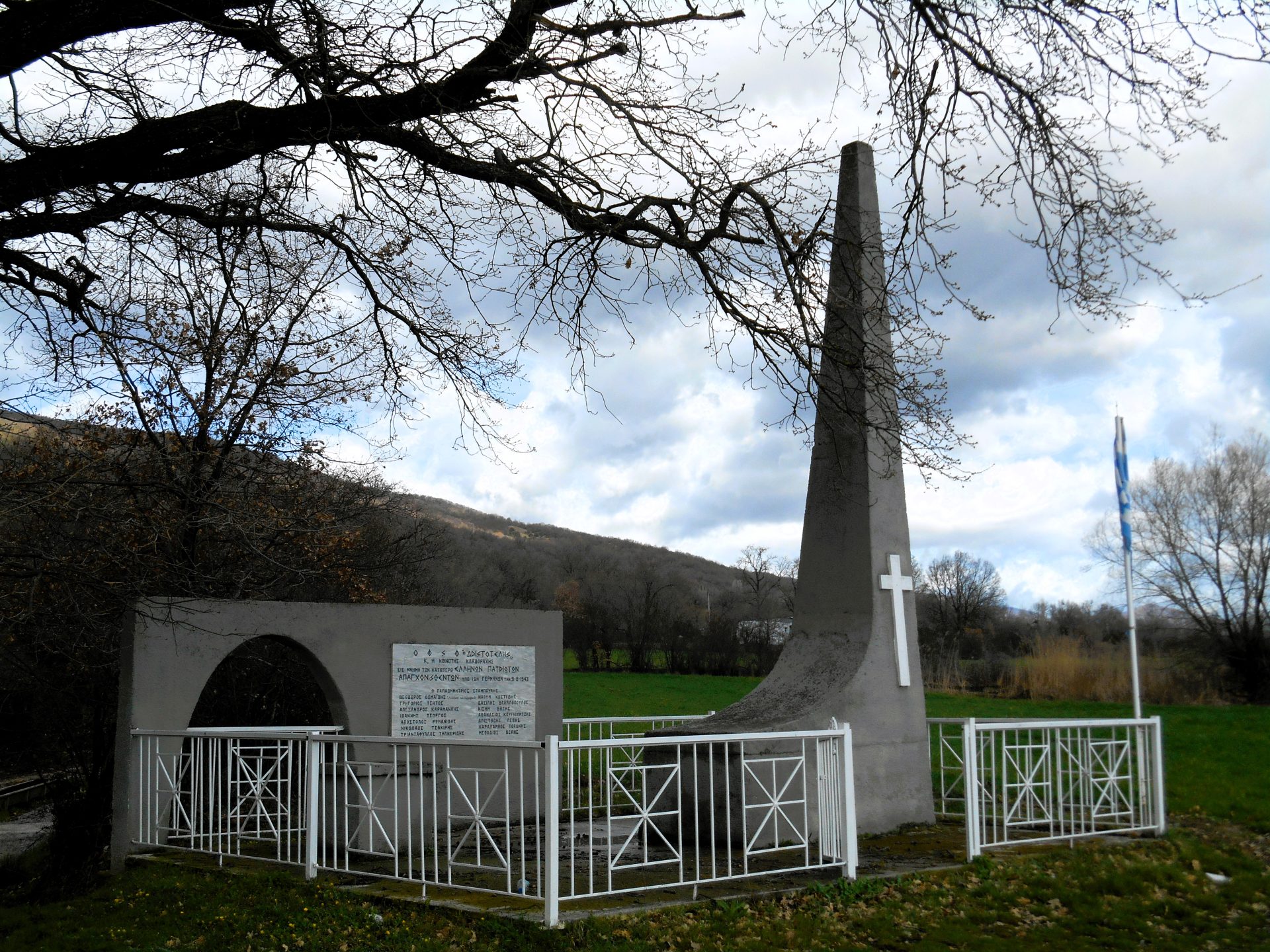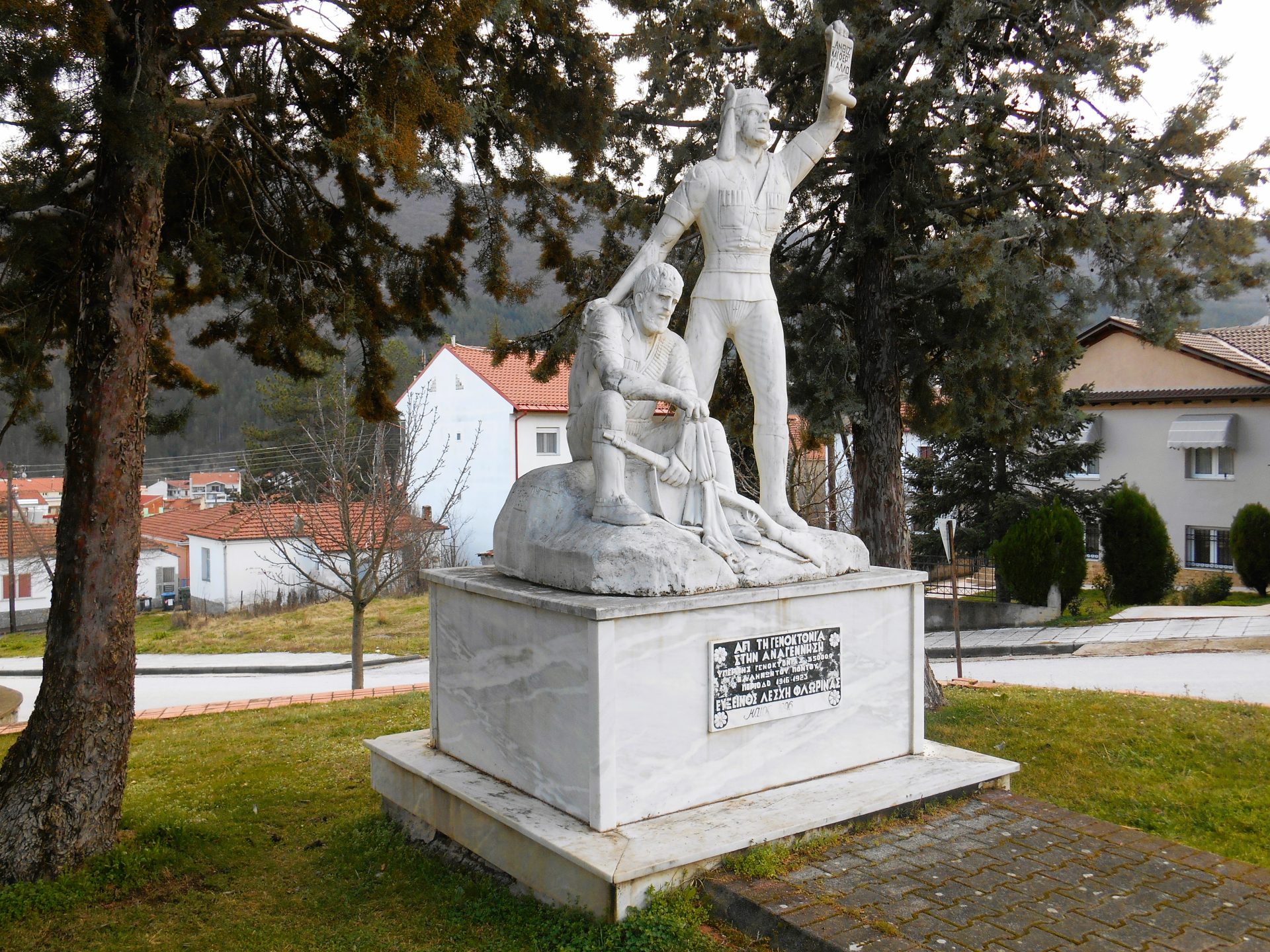
Monument “Genocide of the Greeks of Pontus”
The marble monument by the artist Haris Hadjivassiliou, which is dedicated to the Genocide of the Greeks of Pontus, was erected in 1996 and is located on Karamanlis Avenue, in the Square of the Forgotten Patriots.
The Genocide of the Greeks of Pontus refers to the massacres and deportations against the Greek populations of Pontus carried out by the Neo-Turkish movement during the period 1914-1922. It is estimated to have been responsible for the deaths of more than 350 thousand Pontic Greeks. The survivors fled to Upper Pontus (Russia) and after the Asia Minor disaster in 1922 to Greece. These events are officially recognised as genocide in the Greek state, in Sweden and Australia, but also in international organisations such as the International Association of Genocide Studies.
The artist’s interpretation of the artifact is the sequence of two generations from the genocide to the Renaissance. The old man of the great calamity expresses the suffering, grief, pain and sorrow for those who perished and for those who remained in Pontus and are still armored with chariots ready to defend the sacred and holy. The young, courageous, lad-like man carries the traditions, has his eyes fixed on civilised Europe and, with his hand raised, demands and asserts his rights. The inscription on the scroll is part of the Pontian record: ‘Romania, though it has passed, flourishes and bears more’, which suggests that ‘The nation, though enslaved, will rise again’.
TEXT BY: NOTAS PANAGIOTIS
SOURCE OF PHOTOS: Christos Tegos
